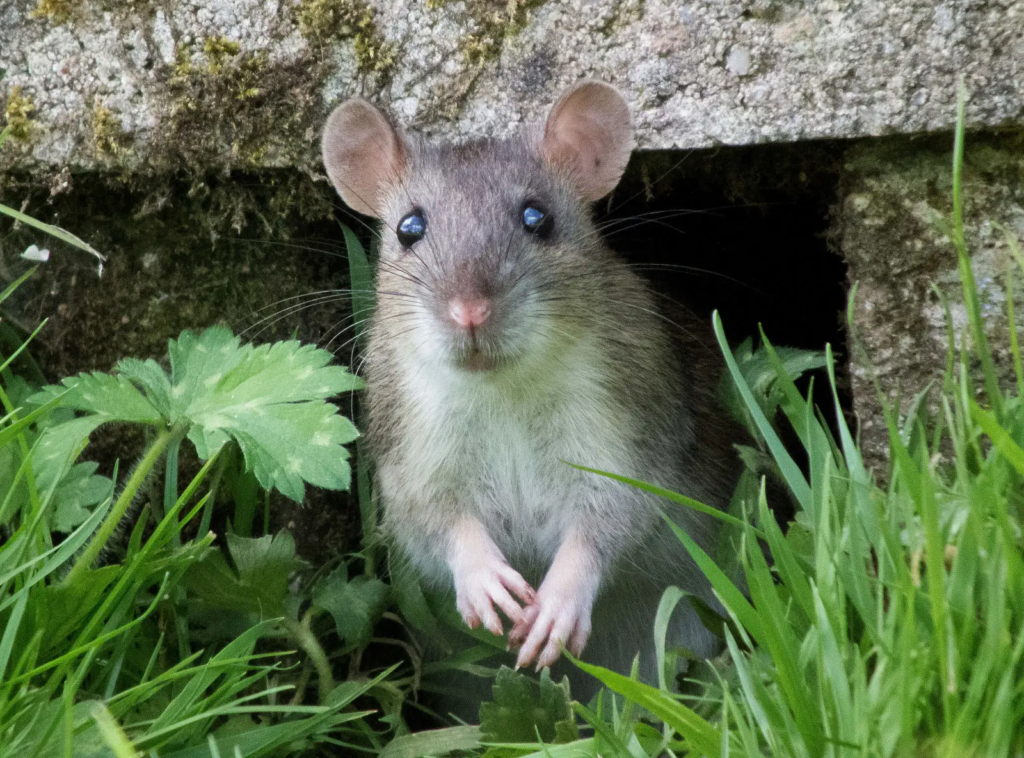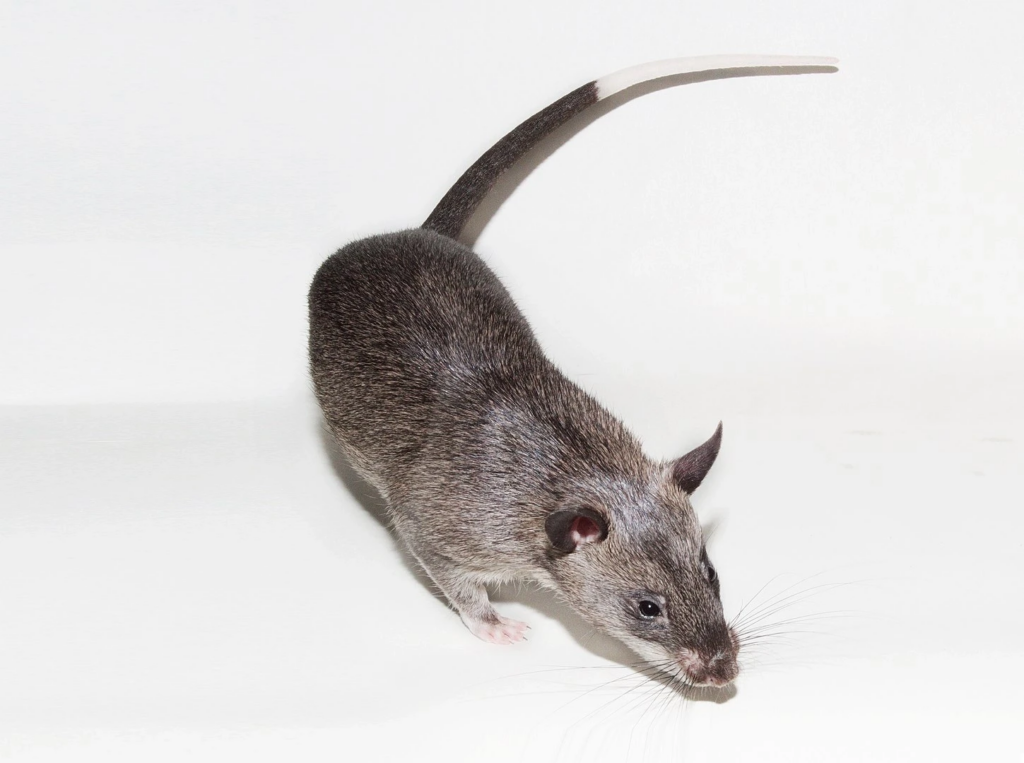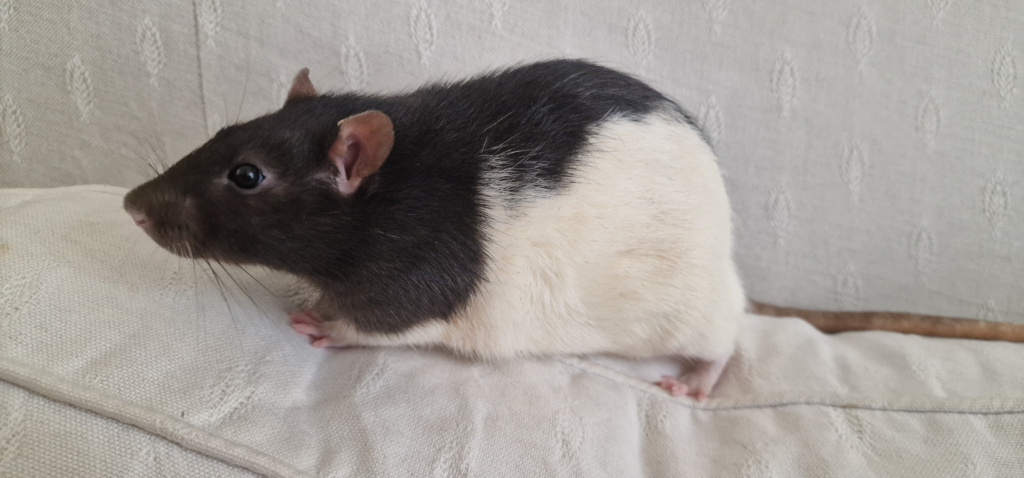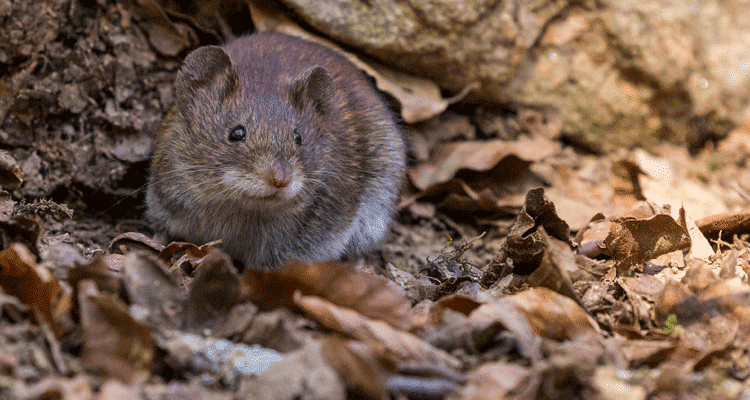How To Get Rid of Rats in the House – The Ultimate Guide
Rats have lived with humans for thousands of years. As cities grew, so did their numbers. At Vinx Pest Control, we get many questions about getting rid of rats. That’s why we’ve put together this detailed guide.
It’s important to know why rats come into your home. They are drawn to food. Next, you need to figure out how bad the problem is. Then, you can use effective ways to get rid of them.
If you want to try it yourself, check out 5 DIY tips to get rid of rats. Or, you can call us for a free quote or at 972-855-8469.
Key Takeaways
- Understanding the reasons behind rat infestations in your home.
- Assessing the severity of the rat infestation.
- Effective methods for rat removal, including DIY techniques.
- The importance of prevention strategies.
- When to consider professional rat extermination services.
Understanding the Rat Problem
To tackle a rat infestation, it’s key to know the problem well. Rats are not just pests; they’re serious health threats and can damage property. At Vinx Pest Control, we focus on finding the root cause before we start removing them.
Common Rat Species in American Homes
The most common rats in American homes are Norway Rats, Roof Rats, and Pack Rats.
- Norway Rats are big, brown or gray, and like lower home levels.
- Roof Rats are agile, black or brown, and live in upper home areas.
- Pack Rats collect and hoard stuff and can be found anywhere in a home.
Knowing the rat species is vital for effective removal.
Signs of a Rat Infestation
Spotting a rat infestation early is important to reduce damage. Look out for:
- Droppings: Rat feces show there’s an infestation.
- Gnaw marks: Rats chew on wood and plastic.
- Strange noises: Sounds from walls or ceilings at night mean rats are there.

Health Risks and Property Damage
Rats can spread diseases and damage property. They contaminate food and surfaces with their waste. Their chewing can harm buildings. Quick action is needed to avoid these problems.
Why Rats Enter Your Home
Rats come into homes for a few main reasons. They look for food, shelter, and a place to nest. Knowing why they come is key to keeping them out.
Food Sources That Attract Rats
Rats are attracted to homes with food they can easily get. This includes pet food, trash that’s not sealed, and food in the pantry that’s not stored right.
Keeping food in sealed containers and cleaning up spills quickly can help keep rats away.
Shelter and Nesting Opportunities
Rats like cluttered places like attics, basements, and behind walls. These spots are perfect for them to make nests.
Clearing out clutter and sealing up nesting spots can make your home less inviting to rats.
Seasonal Factors in Rat Infestations
When it gets colder, rats move inside to find warmth and shelter. This is a big reason for rat problems in the winter.
Knowing when rats are more likely to come in can help you prepare and prevent them.
Assessing the Severity of Your Rat Problem
The first step to get rid of rats is to know how bad the problem is. We need to see how many rats are there and how they get into our home.
Determining Infestation Size
We should look for signs like rat droppings, gnaw marks, and burrows. The more signs we find, the bigger the problem is. We should also listen for noises in the walls or attic at night, as rats are most active then.
Identifying Entry Points and Rat Pathways
Rats can fit through tiny openings. So, we need to check our home for any gaps or holes. Look for grease marks or rub marks on walls and baseboards. These show where rats often go. By finding where they enter and travel, we can plan how to get rid of them.
Essential Preparation Steps Before Rat Removal
Getting rid of rats is more than just setting traps. It needs careful preparation. Before you start, make sure you’re ready to do it safely and well. At Vinx Pest Control, we know how important preparation is.
Safety Precautions When Dealing with Rats
Handling rats can be risky. They can spread diseases through their waste and saliva. So, it’s key to be careful.
- Wear protective gear, like gloves, masks, and eye protection, when dealing with traps or cleaning rat areas.
- Make sure your home is well-ventilated to avoid airborne pathogens.
- Don’t touch rat droppings or nests.
Tools and Materials You’ll Need
Having the right tools and materials is vital for rat removal. You’ll need:
- Rats traps (snap traps, live traps, or electronic traps)
- Bait for traps
- Protective gear (gloves, masks)
- Sealants for sealing entry points
Creating a Rat Removal Plan
A good plan is essential for rat removal success. Your plan should cover the infestation’s extent, entry points, trap choice, and bait. We suggest a thorough home assessment and considering the infestation’s severity.
How to Get Rid of Rats Using Traps
Traps are key in fighting rats. They come in many types to fit different needs. It’s important to pick the right trap to remove rats well.

Snap Traps: Placement and Baiting Techniques
Snap traps are a classic and effective way to control rats. Place them where you see rat signs like droppings or gnaw marks. Use tasty baits like peanut butter or bacon to catch rats.
Make sure snap traps are set up right. Place them with the trigger side facing the wall. Rats usually run along walls.
Live Traps: Humane Capture Methods
Live traps catch rats alive. This lets you release them far from your home. Use bait like fruits or nuts that rats find appealing.
Put live traps in rat hotspots. Check them often to keep rats calm. Release rats at least 5 miles away to stop them from coming back.
Electronic Traps: Modern Solutions
Electronic traps are a modern, quick way to kill rats. They electrocute rats with a touch. These traps can be baited with different attractants and are safe for pets and kids if used right.
They offer a fast kill, which is humane. This makes them a good choice.
Glue Traps: Pros and Cons
Glue traps stick rats to a surface. They can work, but they worry animal lovers. They can hurt the trapped rat a lot.
If you use glue traps, put them where rats are most active. But think about the animal’s suffering before choosing this method.
The right trap depends on what you prefer, how bad the infestation is, and your situation. Vinx Pest Control suggests thinking about your situation. Then, pick the best trap or traps to get rid of rats.
Chemical Control Methods for Rat Elimination
Chemical control can help get rid of rats, but be careful. It uses rat poisons or rodenticides to kill rats. But, it’s important to handle these safely to protect pets, kids, and other animals.
Types of Rat Poisons and Their Effectiveness
Rat poisons come in different types. Some cause rats to bleed inside, while others can fail their systems in other ways. The most used are anticoagulant rodenticides. They work well but need rats to eat them a few times to die.
- Anticoagulant rodenticides (e.g., warfarin)
- Non-anticoagulant rodenticides (e.g., bromethalin)
- Single-dose rodenticides for quicker action
Safe Application of Rodenticides
To use rodenticides safely, follow the maker’s rules. Make sure pets and kids don’t get near them. Use bait stations that kids can’t open and check if they work.
- Use tamper-resistant bait stations.
- Place baits in areas inaccessible to pets and children.
- Monitor bait consumption and adjust as necessary.
Risks to Pets and Children
Using rat poisons can harm pets and kids. They might eat the bait by mistake or get sick from eating a rat that ate poison. It’s key to know these dangers and find ways to avoid them, like using safe bait stations.
At Vinx Pest Control, we stress the need for safety with chemical methods. If you’re unsure about using them, get help from a pro.

Natural and Non-Toxic Ways to Eliminate Rats
Many of us are now using natural and non-toxic ways to get rid of rats. These methods are safer for our homes and the environment. Natural repellents, ultrasonic devices, and predator scents are good options. They are safe for homes with pets and children.
Effective Natural Repellents
Certain smells and substances can keep rats away. Peppermint oil, for example, is not liked by rats. You can put cotton balls soaked in peppermint oil in places where rats are seen.
Other natural repellents include cloves, lavender, and eucalyptus. Using these scents can help keep rats out of your home.
Ultrasonic Devices: Do They Work?
Ultrasonic devices make sounds that rats don’t like. They might scare rats away. But, some studies say rats can get used to these sounds over time.
It’s important to know that ultrasonic devices might not work alone. They can be part of a bigger plan to control rats.
Using Predator Scents and Deterrents
Rats are scared of predators. Using scents of coyotes or foxes can keep them away. You can put these scents around your home or where rats are seen.
For more tips on controlling rodents, check out our page on rodent control tips for Charleston SC.
Rat-Proofing Your Home: Prevention Strategies
To keep your home rat-free, you need to use good rat-proofing methods. This means sealing holes, storing food right, and keeping your yard nice. Also, check your home often for rats.
Sealing Entry Points and Gaps
Rats can get into tiny spaces. So, you must seal all holes around your house. Look at your house’s outside, like vents and chimneys, and block any holes with steel wool or caulk.
- Seal gaps around doors and windows
- Use hardware cloth to cover vents and chimneys
- Repair torn screens and damaged rooflines
Proper Food Storage and Waste Management
Rats love food, so you must store it well. Keep food in sealed containers and clean up spills fast. Also, make sure your kitchen is clean.
- Store pet food and bird seed in sealed containers
- Keep trash cans tightly sealed
- Regularly clean and disinfect food preparation areas
Landscaping Tips to Deter Rats
Landscaping can help keep rats away. Keep your yard clean and trim back trees and shrubs. Also, remove any clutter or debris.
- Keep your yard free of debris and clutter
- Trim back trees and shrubs to reduce hiding spots
- Use gravel or mulch to deter rats from nesting
Regular Maintenance Checks
Checking your home often is key to keeping it rat-free. Look for rat signs, check for holes, and keep your yard neat.
- Inspect your home regularly for signs of rats
- Check for gaps and holes around your home
- Maintain your yard to reduce hiding spots
Cleanup and Sanitization After Rat Removal
After removing rats from your home, cleaning up is key. This step is important to get rid of health risks like diseases and allergens. We’ll show you how to safely get rid of dead rats, clean contaminated areas, and fix any damage.
Safe Disposal of Dead Rats
When dealing with dead rats, safety is a must. Wear gloves and put the rat in a sealed bag or container. Check local rules for how to dispose of dead rodents.
Disinfecting Contaminated Areas
Rats can leave behind harmful stuff like urine and saliva. To clean, mix bleach and water (1 part bleach to 10 parts water). Apply it, wait a few minutes, then rinse with clean water. This kills bacteria and viruses.
Repairing Damage Caused by Rats
Rats can really mess up your home, like chewing on wires or flooring. To fix this, find the damaged spots and see how bad it is. For big repairs, like electrical issues, get help from experts.
Professional Rat Control Services by Vinx Pest Control
If rats are a problem, Vinx Pest Control can help. Our experts know how to get rid of rats. They offer custom solutions for your home.

Comprehensive Rat Inspection and Assessment
We start with a detailed check of your home. We find out how bad the rat problem is and where they get in. This helps us make a plan to get rid of them for good.
- Identification of rat entry points and pathways
- Assessment of infestation size and severity
- Detection of conducive conditions that attract rats
Vinx’s Integrated Pest Management Approach
Vinx Pest Control uses a special way to fight rats. We seal up where they get in, remove things that attract them, and use traps and other methods. This way, we get rid of rats for good.
Follow-up Services and Guarantees
We make sure the rats are gone for good. Our guarantees give you confidence in our work. We promise to solve your rat problem for the long term.
Choosing Vinx Pest Control means you get a team dedicated to making your home rat-free. We’re here to help you keep your home safe from rats.
Conclusion
To get rid of rats at home, you need a solid plan. This includes knowing how rats work, using the right removal methods, and stopping them from coming back. Rats only need a little food and water each day. They can sneak into homes through tiny openings, so sealing all cracks is very important.
Keeping rats away is essential for a rodent-free home. This means storing food right, managing waste well, and checking your home often. If rats are already a problem, Vinx Pest Control can help. They do detailed checks to find and fix the rat problem.
For more tips on rat control and prevention, check out the New York State Department of Health website. It has lots of info on pests like rats. By being proactive and using many strategies, you can keep your home safe and healthy for everyone.
FAQ
What are the most common rat species found in American homes?
In American homes, you’ll often find Norway Rats, Roof Rats, and Pack Rats. Knowing which rat you have is key to getting rid of them.
How can I identify a rat infestation in my home?
Look for signs like droppings, gnaw marks, and strange noises. Rats also leave tracks, nests, and burrows.
Why are rats attracted to my home?
Rats seek food, shelter, and places to nest. They like easy food and cluttered spots for shelter.
What are the health risks associated with rat infestations?
Rats spread diseases and damage property. They can carry leptospirosis, hantavirus, and rat-bite fever.
How can I assess the severity of my rat infestation?
Count the rats and find where they get in. This helps you plan how to get rid of them.
What are the most effective methods for rat removal?
Traps, chemicals, and natural repellents work well. Choose based on how bad the problem is and what you prefer.
How can I prevent rat infestations in the future?
Keep your home rat-proof. Seal holes, store food right, manage waste, and use landscaping that keeps rats away.
What are the benefits of hiring a professional rat removal service like Vinx Pest Control?
Services like Vinx Pest Control do thorough checks and use smart pest plans. They also follow up to keep your home rat-free.
How can I safely dispose of dead rats and disinfect contaminated areas?
Wear protective gear and put the rat in a sealed bag. Clean with a disinfectant to get rid of health risks.
What are some natural and non-toxic ways to eliminate rats?
Use natural repellents, ultrasonic devices, and scents that scare them. Peppermint oil, lavender, and cloves can keep rats away.
How can I rat-proof my home?
Seal holes, store food right, manage waste, and use landscaping that keeps rats out. Regular checks help too.



